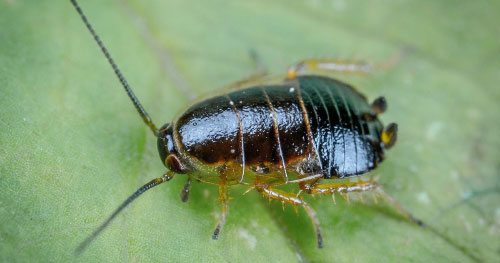Exploring Various Bug Control Approaches to Attain Long-Term Success in Handling and Preventing Infestations in Residential Locations
Reliable pest control in property areas requires a complex approach that stabilizes immediate results with long-lasting sustainability. What might these developments require, and exactly how can they change our understanding of insect control?
Recognizing Bug Control Methods
Although insects have existed together with humans for centuries, the techniques used to control them have evolved substantially with time. Understanding these techniques is critical for successfully managing and preventing infestations in houses. Bug control techniques can be extensively categorized right into 3 key strategies: social, mechanical, and chemical.
Cultural methods concentrate on changing the setting to lower pest attraction and breeding. This consists of appropriate cleanliness, crop rotation, and environment alteration, which can considerably decrease pest populations. Mechanical control entails physical obstacles and traps to handle insects directly, such as screens, vacuum cleaners, and sticky catches. This technique is frequently favored for its non-toxic nature and prompt outcomes.
Chemical control remains among one of the most commonly made use of methods, including the application of pesticides to get rid of bugs. While efficient, this technique necessitates careful consideration of security, potential resistance development, and environmental effect. Integrated Parasite Monitoring (IPM) incorporates these techniques to develop an alternative strategy, promoting lasting pest avoidance and marginal damage to advantageous microorganisms. By understanding these different pest control techniques, home owners can make informed decisions that advertise effective administration and preservation of their space.
Eco-Friendly Parasite Control Solutions
How can home owners efficiently handle bug troubles while minimizing their environmental impact? Environment-friendly bug control remedies supply a lasting alternative to conventional techniques, focusing on the wellness of both homeowners and the surrounding environment. These solutions typically use natural components and strategies that disrupt bug behavior without presenting unsafe chemicals right into the atmosphere.
One effective approach is using valuable pests, such as ladybugs and lacewings, which exploit typical insects like aphids and mites. Additionally, diatomaceous planet, a natural powder made from fossilized algae, can be sprinkled in areas where bugs are common, acting as a desiccant that damages bugs while remaining risk-free for people and pets.
In addition, applying safety nets is critical. roach control near me. Homeowners can make certain correct hygiene by securing entrance points, maintaining tidy space, and taking care of waste efficiently. Growing pest-repellent herbs, such as mint and basil, can also discourage undesirable site visitors
Inevitably, eco-friendly bug control options encourage house owners to attend to invasions responsibly, cultivating a safer living atmosphere while advertising eco-friendly balance. By embracing these techniques, people can add to a healthier world while successfully managing pest-related issues.
Chemical Insect Control Options
While eco-friendly solutions are significantly popular, there are circumstances where chemical bug control alternatives might be essential for reliable monitoring of severe infestations. Chemical controls, including insecticides, fungicides, and herbicides, are commonly click over here made use of to swiftly reduce pest populations and reduce damage to homes and gardens.
These products can be classified into two main categories: Continued synthetic chemicals and natural pesticides. Synthetic chemicals, such as pyrethroids and neonicotinoids, are engineered to target certain bugs, supplying fast knockdown results. On the other hand, all-natural chemicals, derived from plant or mineral resources, might use a much more ecologically pleasant choice while still supplying reliable outcomes.
Before utilizing chemical insect control, it is vital to carry out a detailed evaluation of the invasion and identify the details bug involved. This ensures that the chosen chemical is both effective and appropriate. In addition, homeowners must comply with security guidelines, including correct application methods and individual protective devices, to minimize health and wellness threats and ecological impact.
Integrated Bug Monitoring Methods

Biological control entails the usage of all-natural predators or bloodsuckers to manage bug populations. Physical controls, like catches or barriers, can protect against insects from going into homes or destructive plants.
Monitoring and evaluation are essential elements of IPM, enabling for prompt treatments based on pest population limits. By focusing on preventive steps and making use of a mix of tactics, IPM not just addresses existing infestations however additionally cultivates long-term bug monitoring solutions that secure both human health and the setting. This detailed method is important for lasting insect control in suburbs.
Arising Technologies in Pest Control
The advent of arising modern technologies in you can try these out parasite control is revolutionizing the means we handle pest populations, supplying innovative solutions that enhance efficiency and efficiency. Breakthroughs in accuracy farming, for instance, use data analytics and sensor innovations to keep an eye on parasite task and ecological problems, enabling targeted interventions that reduce pesticide usage.
Additionally, drones geared up with imaging technology are being employed to check big locations for invasions, giving real-time information that help in prompt decision-making. Furthermore, biotechnology is playing a critical duty, with the development of genetically customized organisms (GMOs) created to reduce parasite populations while maintaining advantageous varieties.

Last but not least, clever catches and monitoring tools outfitted with IoT capacities make it possible for home owners and pest control professionals to receive instantaneous alerts regarding parasite task, facilitating punctual activity. Collectively, these emerging technologies not just boost parasite monitoring end results but also contribute to environmental sustainability by minimizing dependence on typical chemical therapies.

Final Thought
In final thought, reliable pest control requires a complex method that integrates social, mechanical, and chemical methods. The assimilation of these methods is important for attaining lasting success in pest management.